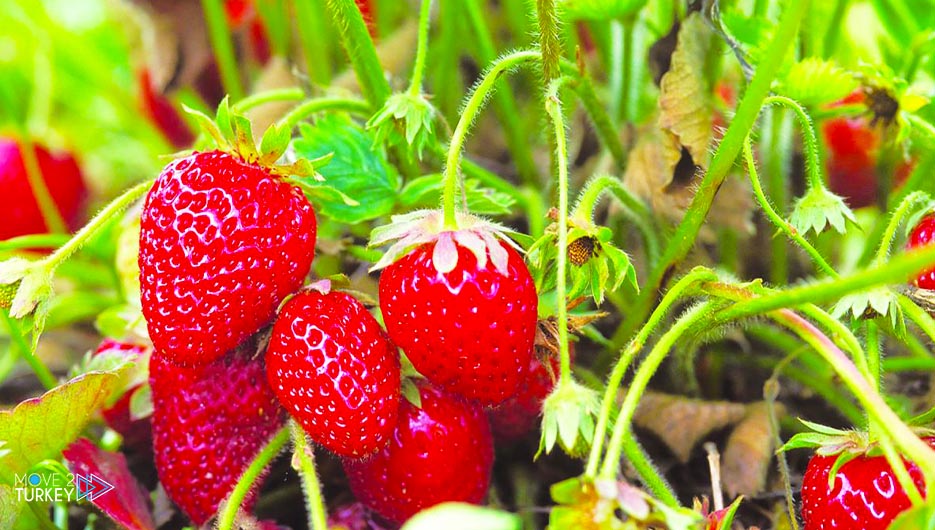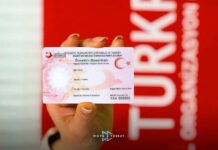
On vast areas inside the campus of the Somali “Zamzam University”, greenhouses (plastic) are spread in order to diversify the agricultural crops in the country.
-Advertisement-
With Turkish support, the university developed the country’s agricultural wealth by conducting research on local crops in order to improve them, as well as importing seeds and seedlings of non-traditional crops from the Turkish state of Antalya in order to adapt them to the hot geographical climate in the African country.
The story of the strawberry project in Somalia tells of the success of agricultural experiments on crops brought from Turkey and that began to bear fruit after providing the climatic factors that help their germination.
As part of the university’s project to diversify agricultural crops in the country, the Faculty of Agriculture brought the strawberry crop from Antalya, southern Turkey, after conducting scientific experiments on the ability of this fruit to adapt to the hot climate that characterizes Somalia.
-Advertisement-
The university has planted about 2,500 strawberry seedlings from two different climatic regions as a preliminary experiment to produce this plant in suitable weather conditions.
The Dean of the Faculty of Agriculture at Zamzam University Yahya Abdullah Issa said that the strawberry cultivation project is very different from other crops that were previously cultivated. The prevailing climate in Somalia is semi-arid and does not contribute to the production of this plant unless a special climatic atmosphere is provided.
Issa added that the first experiment of the strawberry project failed as a result of it being affected by the environmental factors surrounding the greenhouses, such as temperature, soil and wind.
-Advertisement-
He continued, “But the Faculty of Agriculture, in cooperation with the Turkish Cooperation and Coordination Agency (TIKA), continued to conduct other experiments on the strawberry project to produce this plant and expand its spread throughout the country.”
A new successful experiment for strawberry production was carried out by an agricultural team at the university after the failure of the first experiment. The team was able to provide suitable weather and soil for exotic fruits in the country, so the strawberry began two weeks after planting it, announcing that it would turn into fruits soon.
Othman Abdul Rashid, Protected Agriculture Officer at Zamzam University, said that technical and climatic factors contributed to the success of this experiment, which is currently in the flowering stage.
-Advertisement-
Osman added: “We challenged the climate to make the experiment a success. During the day, strawberries need a temperature of no more than 25 degrees Celsius, while at night they need between 15-18 degrees Celsius, at a time when temperatures in Somalia at night reach more than 23 degrees Celsius.”
He continued, “The strawberry crop requires extreme routine care by providing fertilizers, some of which do not exist in the Somali soil, in addition to periodic irrigation and spraying with pesticides to protect the plant from diseases and insects.”
And he added, “The greenhouse in which the strawberry experiment took place contains 600 seedlings, with a distance of about 30 cm between one seedling and another.”
-Advertisement-
Osman explained that some seedlings have already begun to germinate, adding that they expect after about three weeks that all these seedlings will bear fruit, “which means that a great achievement and a unique experience has taken place in Somalia, where it could be the beginning of the spread of strawberries throughout the country.”
The greenhouses at Zamzam University are not only a theater for agricultural experiments, but also a place where students apply what they study theoretically in the classroom.
Muhammad Ahmad Khalif, a student at the Faculty of Agriculture, said: “We come to this agricultural area at least two days a week to apply the theoretical lessons we took from the classes, where we learn about the different types of agricultural crops in the country and those imported from abroad, ways to take care of them, and their natural and chemical needs.”
-Advertisement-
Khalif added, “We seek to implement what we have studied at the university on the ground after graduating from university and to develop the agricultural sector in the country, which depends on the traditional method.”
The agricultural area of the university contains more than 10 agricultural houses of different sizes, where different types of vegetables are grown, such as cucumbers, tomatoes, hot and sweet peppers.
After the success of the strawberry cultivation experience, the university is preparing for a fierce competition for the local market that imports strawberries from abroad, especially from the neighboring country.
-Advertisement-
Abdul Rashid said that the university contributes, through its agricultural experiences, to supporting the local market, as it provides hundreds of kilograms of vegetables and fruits in the various markets of the capital, Mogadishu.
He added, “Although strawberries are not popular in Somali circles, one kilo of strawberries is sold at about $4 in the local market, which opens the way for us to compete and meet local needs.”
He continued, “The strawberry fruits are included in several types of foods and are used in cosmetics to refresh the skin. They also have medicinal benefits for treating many heart diseases and blood pressure.”
-Advertisement-
For his part, Dean of the Faculty of Agriculture Yahya Abdullah said that the university farm works weekly to provide about 3,000 kg of vegetables and potatoes in local markets.
Although Somalia is considered a food basket in the region due to its enjoyment of ten million hectares (a hectare equals about ten thousand square meters) of agricultural land, according to the statistics of international organizations, only one percent of it is utilized.






















